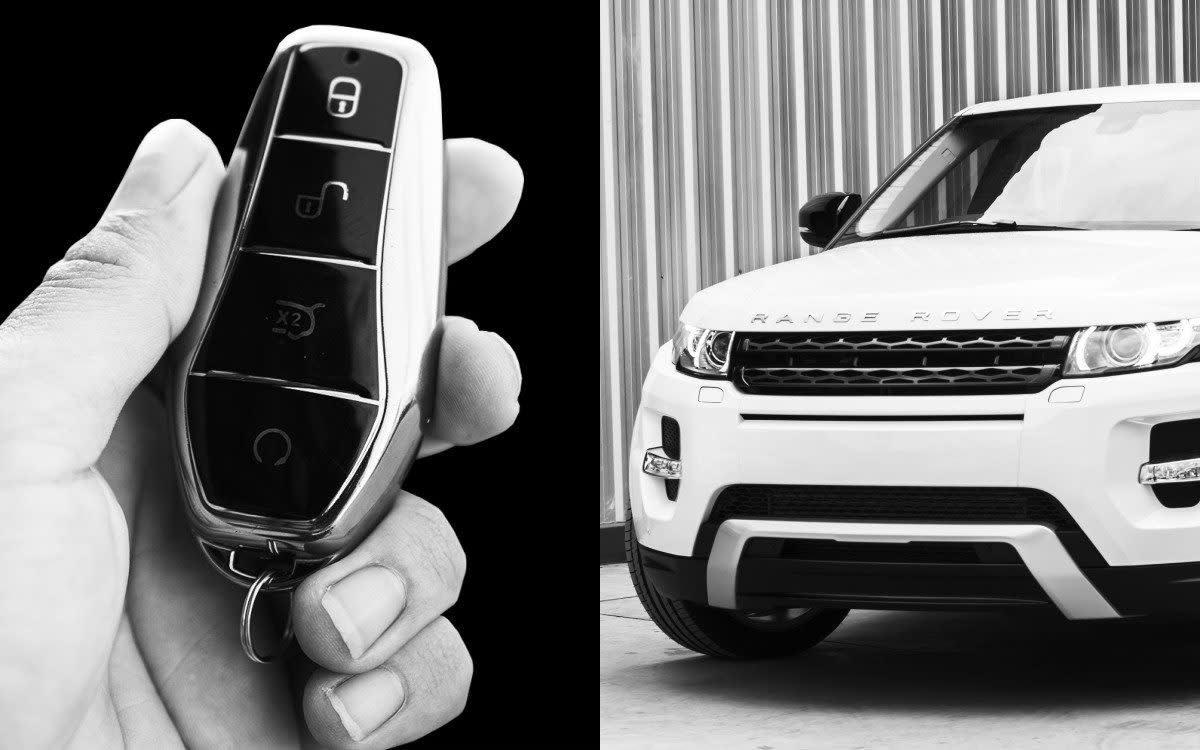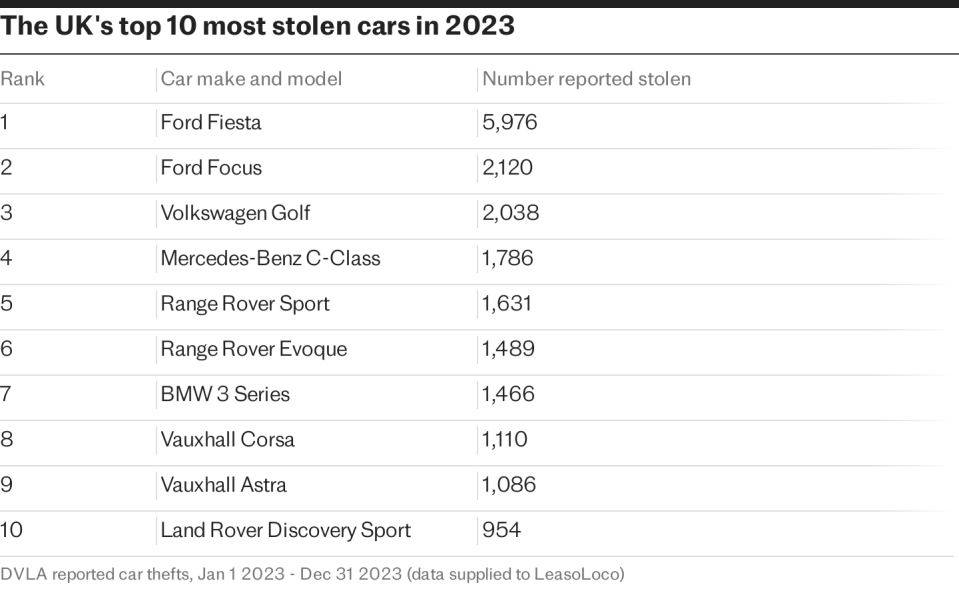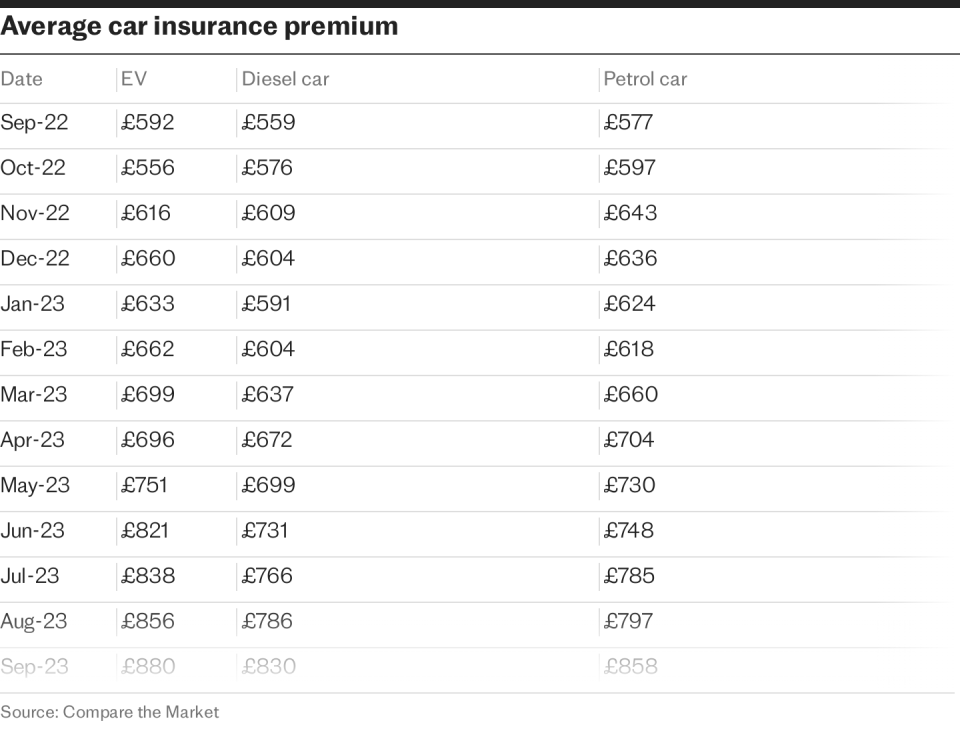Eight ways to stop your keyless car getting stolen

The “gimmick” of keyless car entry is the driving force behind a surge in vehicle thefts, with criminals targeting a host of manufacturers.
Range Rovers have become notorious for being an easy target, and the reputation has hit owners’ pockets who now find it increasingly difficult to insure their 4x4s.
The keyless car theft epidemic isn’t just constrained to high-end vehicles, though. The Ford Fiesta holds the unwanted title of being the most stolen car, with almost 6,000 being taken last year, according to the DVLA.
Telegraph Money delves into why keyless cars are an easy target, and the eight steps you can take to beef up security on your vehicle.

How keyless cars are commonly stolen
The most common type of theft in recent years has been through “relays” and “repeaters”, which thieves use to intercept the signal from a keyless fob and transmit it to another device which is used to open the car.
Working in pairs, criminals will wander on to a driveway at night, with one getting as close to the house as possible, holding a box with an aerial.
This box is a device listening for the faint signal emitted by a car key indoors, which could be in the pocket of a jacket or on a hook in the hallway.
It picks up and then repeats this signal at full blast to the second thief, who is holding a related device next to the car, which can simply be unlocked. Within minutes, sometimes seconds, the thieves have some new wheels.
Eight security measures to protect your keyless car
Up against such high-tech thieves, it can be difficult to know what to do for the best – but luckily there are several ways you can help keep your car safe.
1. Keep your key in a Faraday pouch or box
Cocooning your keys in a metal-lined pocket, a Faraday pouch can be useful for any keyless car owner.
They can be bought online for as little as £5, and are very effective at blocking the signal between the key and your car. You can also get stronger Faraday boxes, which tend to cost between £15 and £30.
Beware that they do degrade over time, and should be replaced every couple of years. Over time you may begin to realise that the wing mirrors on your car are opening while it is locked, this is a sign that your pouch or box is weakening.
Alternatively, an everyday metal container, such as a biscuit tin, will likely do the same job – but purpose-made products are inexpensive and very effective.
As an extra precaution, you could wrap the key in tin foil for an additional layer of signal-blocking protection.
It’s also advisable to keep your pouches and box as far away from your car as possible – particularly, keep them away from the windows and doors of your house, making it harder for criminals to detect and amplify your key signal.
Some drivers who can’t park on their own property opt to park it a distance from their house. This, too, makes it harder to amplify the signal, and they also might not know which house contains the corresponding keys.
2. Secure a steering wheel lock
Cumbersome yet very effective, the good old-fashioned steering wheel lock is increasing in popularity.
Steffan George, managing director of the Master Locksmiths Association (MLA), said: “Over the past three to four years, we’ve seen a significant increase in the number of people requesting mechanical devices like steering locks.
“A lot of the thieves are coming with electronic gubbins like laptops to hack into stealing your car, but not hand tools.
“So if they see a visible deterrent such as a steering wheel lock, they are going to move on. It’s the classic and old-school way of securing your vehicle, but it’s the best. There’s hardly any faff for you as a driver.”
A good-quality steering lock will likely set you back around £120.
It’s also possible to get wheel clamps and pedal boxes that encase your car’s accelerator, brake and clutch pedals, but they are less common methods of mechanical security.
3. Get a tracker fitted
Fitting a tracking device won’t prevent a vehicle from being stolen, but it will increase the chances of it being recovered and returned by the police.
“A tracker is a secondary security measure as it’s not going to stop thieves taking the car, it’s going to allow you to know where it is,” Mr George said.
“But then most of the time, the car goes straight into a container and it can’t be tracked from inside as it stops the signals.
“So while trackers can be good, you really want to have measures in place that stop thieves actually starting the engine.”
Some insurers will actually insist that you have a tracker fitted before they insure your vehicle. In some cases, they refuse to pay out for stolen cars that have been fitted with anti-theft hardware that is not activated.
In one case, a customer was told that his stolen Range Rover Velar, which cost £65,000, was not eligible for a payout.
Trackers can be bought for as little as £20, but a quality product will likely set you back around £50.
4. Disable keyless entry
Most cars fitted with keyless entry will allow you to turn the system off. This may defeat the whole purpose of keyless entry, yet it can boost your security.
How you do this will depend on the manufacturer and the model of the vehicle.
Fobs provided by the likes of BMW and Mercedes come fitted with a motion sensor that deactivates the signal emitted from the key when it isn’t in use.
“You get home, put the keys down somewhere, and if they are dormant for a period of time they’ll stop emitting the signal,” Mr George said.
“When you pick them back up the next day, they wake up and the signal is back.”
5. Get your keys reprogrammed
If you bought your car second-hand, you might not have been given all sets of keys that exist, which leaves your car vulnerable to a break in.
Getting your keys reprogrammed – either directly through the car manufacturer or with an auto locksmith – can be a solid layer of defence, just like getting your locks on your front door changed at home.
6. Install a ghost immobiliser
Most modern cars will come with a factory-fitted immobiliser, but after-market “CAN-Bus” immobilisers can be installed to bolster security.
“Ghost” immobilisers are the most common in Britain, and they work by preventing your car starting unless certain buttons on your steering wheel/dashboard are pressed in a specific sequence, just like a passcode on your phone.
Even if thieves break into the vehicle, and even if they have a key or key fob, they will not be able to start the car – unless they also know the sequence of buttons.
The sequence is completely customisable and is set by the owner of the car. Specialists can fit the immobiliser within roughly two hours for around £500.
7. Etch your windows
Another “secondary” security measure is etching a car’s windows with the logo of the International Security Register and a code unique to the vehicle.
The code is recorded in a datafile used by the police, which can be useful if it gets targeted by thieves.
Halfords says etched vehicles are 45pc less likely to be stolen and 50pc more likely to be recovered if stolen. Etching can cost around £20.
Seeing an engraved window could be enough to deter a thief, as stolen cars identified in this way are harder to resell.
8. Park in your garage
“If you’ve got a garage, use it,” Mr George said. “Most people who have a garage don’t actually use it for their car – they put a load of rubbish in there but not the most expensive thing they’re likely buy.”
If you don’t have a garage, installing CCTV, motion-activated lighting and gravel on the driveway can act as deterrents to criminals.
Retractable bollards, which you can lift and lock once you’ve parked on your driveway, also ensure that a hotwired car can’t be driven away without a fight.
Recommended
How cars went from the ticket to freedom to an unaffordable luxury
How bolstered security can reduce your insurance
Paul Daly, director of InsureDaily, said improving your vehicle’s security can “make insurers look more kindly upon your theft excess or even your renewal premium” – so don’t keep them secret.

“The safer your car is, the less risk there is to them,” he said. “So make sure you inform your insurance company of any and all security features you have fitted.”
“Ultimately, insurance companies are always driven by statistics. For this reason, many will not even insure Range Rovers.
“It takes time for vehicle manufacturers to change their reputation and regain trust in safety in the eyes of consumers and insurance companies alike.”
In response to the thefts, Jaguar Land Rover (JLR) has encouraged customers with cars made between 2018 and 2022 to go to their local garages to receive free security upgrades.
Owners with older cars are also encouraged to come forward to see whether they can have extra measures fitted.
JLR is also paying for a police crackdown on car thefts as part of a £15m rearguard action against gangs who are smuggling Range Rovers abroad.

